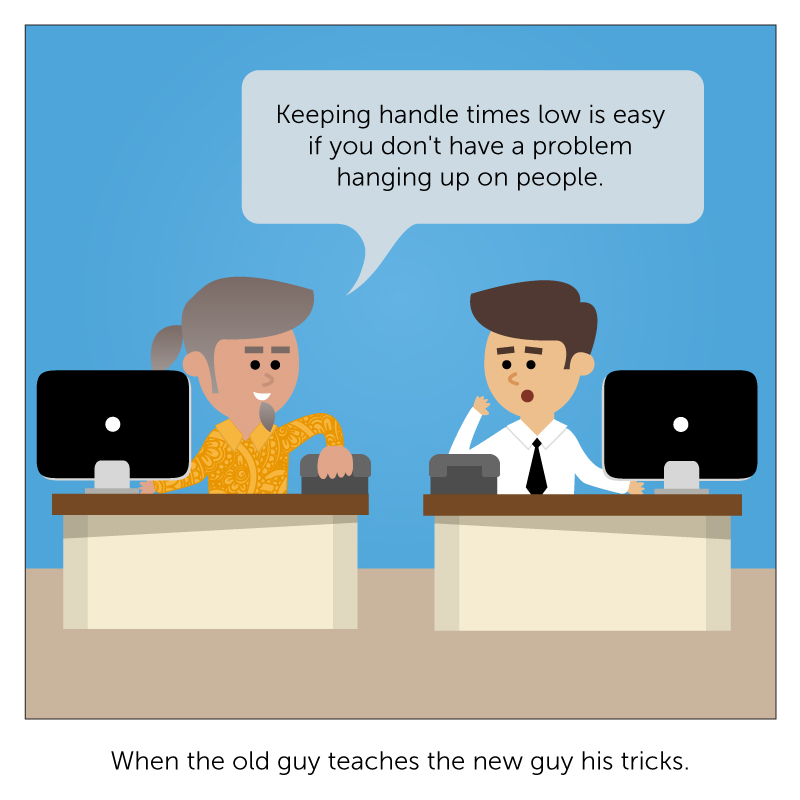Contact center management may believe that everything is running smoothly in their team, but there are some deadly sins that can slowly decrease productivity and increase customer dissatisfaction. The following deadly sins, if not avoided, can kill a contact center.
1. Keeping a customer waiting for too long
Whether a customer calls, texts, emails, or chats, a contact center agent should respond immediately whenever possible. Customers become annoyed when told a contact center has an unusually high volume of interactions, and may abandon their attempt to reach the contact center all together. Contact center agents should also avoid putting a customer on hold. Customers would rather stay on the line while an agent searches for information than be placed on hold only to wonder if the agent is ever returning.
2. Transferring customers unnecessarily
Customers reach out to contact centers in order to receive answers to their questions, and when agents are unable to answer those questions without transferring to another agent, it conveys incompetency. There will be times when a customer has an unusually specific issue that only management can resolve, but for the normal day-to-day interactions, agents should be trained to handle common questions without transferring.
3. Asking customers to repeat information they’ve already provided
Asking customers to repeat information is not only annoying to the customer but is inefficient and wastes contact center time as well. Whether a customer provided necessary information during a previous call or when speaking to a previous agent, any provided data should be stored and easily accessible. Contact center software tracks customer data and pulls that data when the customer calls, emails, texts or chats again, so agents can spend their valuable time quickly helping customers resolve issues.
4. Focusing on quantity instead of quality
The temptation for contact center management is to focus on speed of answer or handle time as metrics for success. Focusing solely on the number of interactions, however, fails to measure the quality of the customer experience. To keep customers loyal, contact center teams must do everything they can to ensure that all customer concerns are addressed, no matter how long an interaction takes.
5. Failure to adequately train employees
Most modern contact centers rely on software to manage multiple communication channels, which goes a long way in keeping a contact center organized and efficient. However simply implementing software is not enough to guarantee productivity and an improved customer experience. Contact center employees should be well trained in how to use new technology to avoid getting confused during an interaction. A confused agent can make a call, email correspondence, chat, or text last far longer than necessary. By setting aside time for training, contact center management can ensure that employees know how to use technology to improve the customer experience.
6. Understaffing
In order to cut costs, some contact centers reduce their number of employees or keep the same number of employees even when a contact center grows. While it’s true that fewer employees means fewer salaries to pay, fewer employees also means longer wait times for customers who are likely to get frustrated and take their business elsewhere. Fewer employees can also mean overwhelmed and frustrated agents who are likely to burn out and quit, increasing employee turnover and the time and recourses necessary to train new employees, ultimately leading to more costs in the long run.
By avoiding these six deadly sins, contact centers can increase both productivity and the quality of the customer experience, ensuring that contact center performance will continue to thrive and grow.








